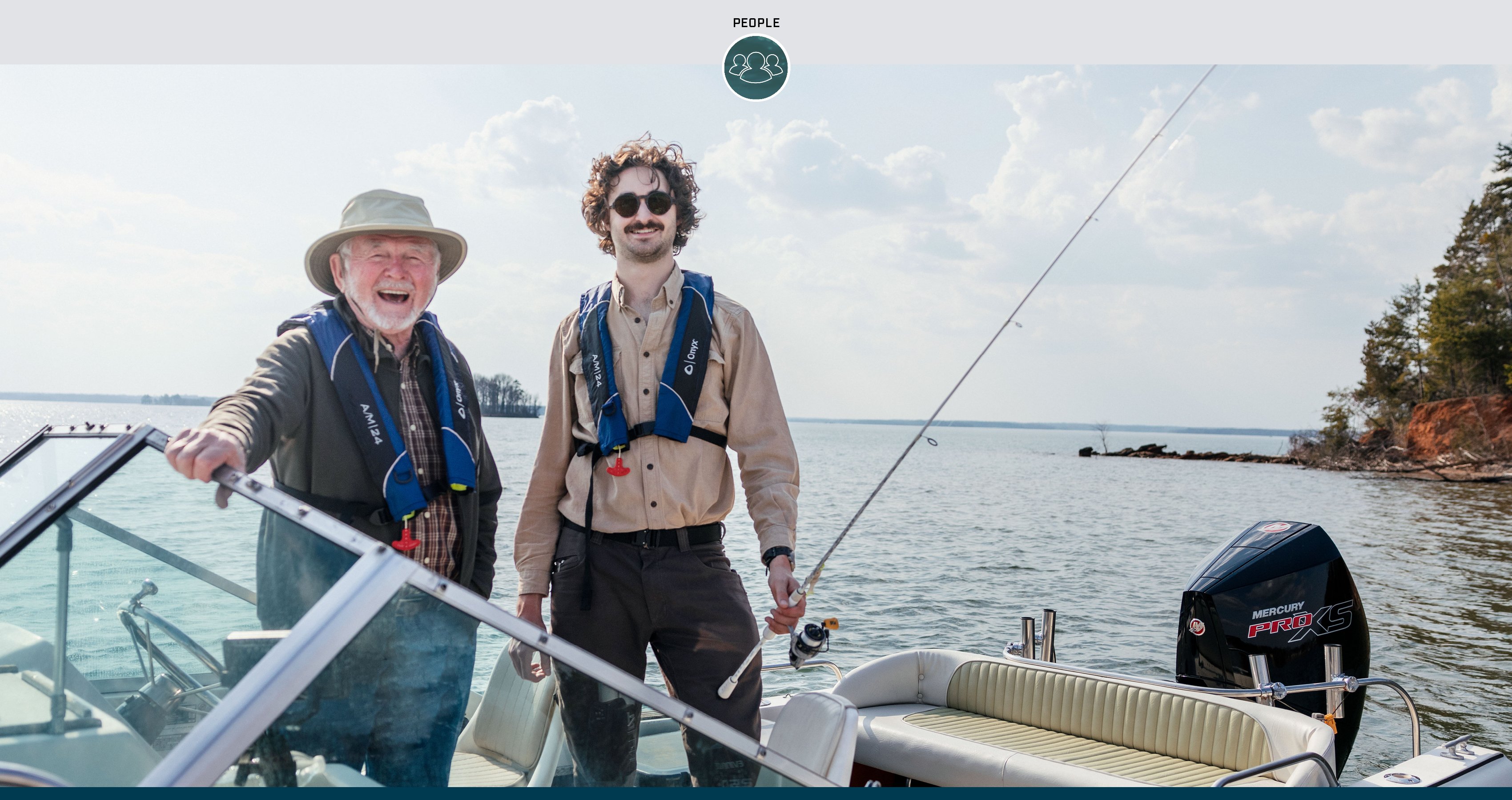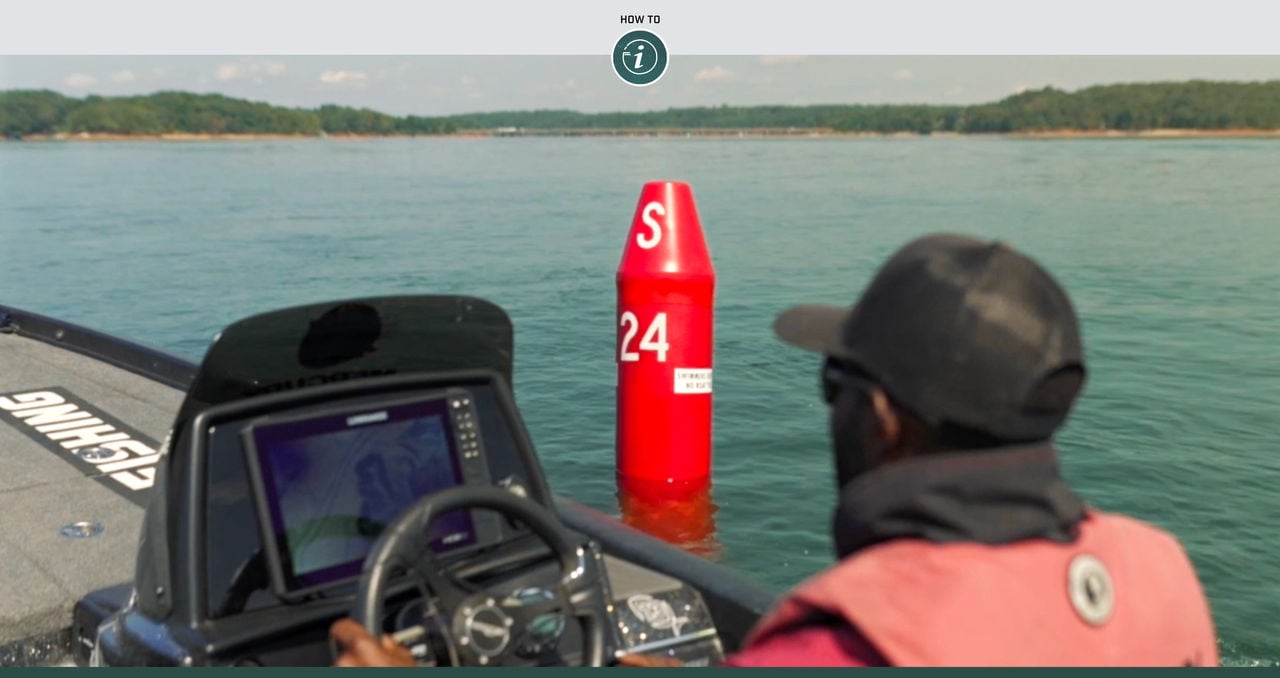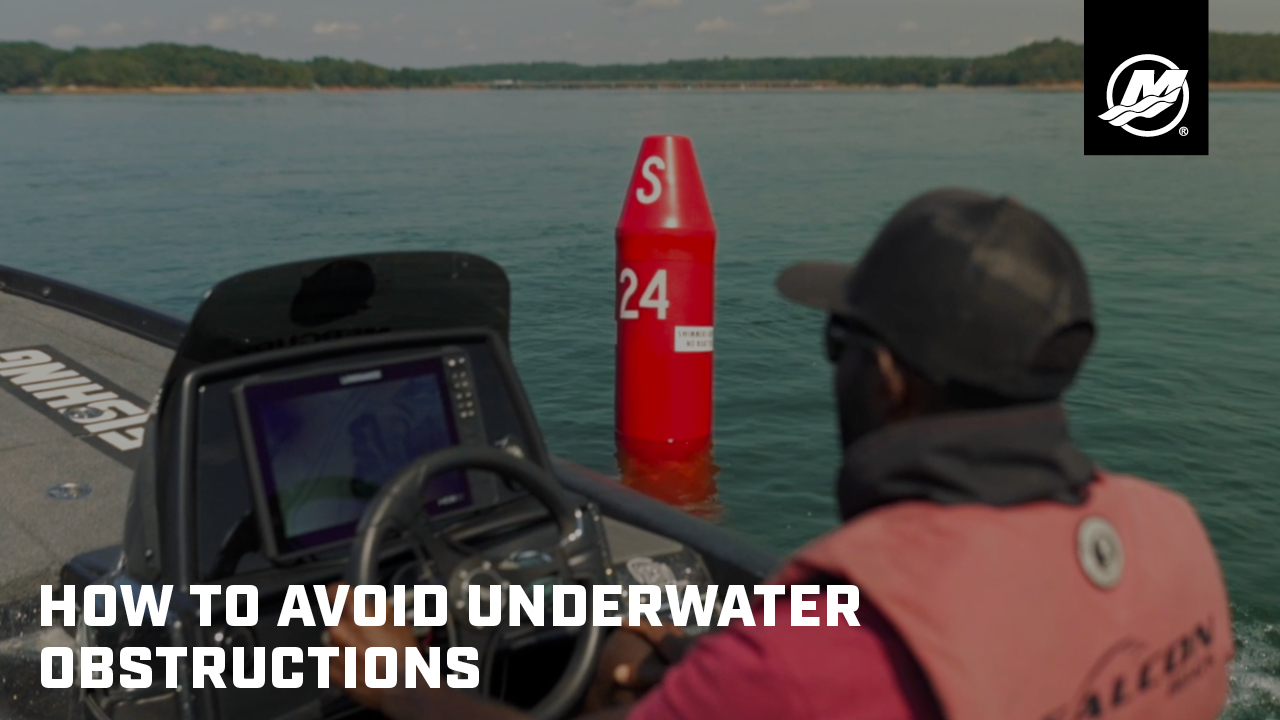Wing dams, shallow humps, submerged trees, rock bars, sand flats, old bridge pilings, sunken docks – all of these and plenty more are often hidden from view while driving a boat. And all it takes is hitting one to not only cause costly damage to your boat, but to put you, your passengers and others in harm’s way.
That’s why Mercury pro Brian Latimer is adamant about getting to know any body of water before he ever launches his boat on it.
How? Modern technology.
He’ll start by looking at satellite images of the body of water, which can often reveal shallow areas and deeper channels to first give him an idea of what dangers may be out there.
From there, being a professional angler comes in handy, as his electronics have some of the most detailed topographical maps.
“My Lowrance electronics can birddog just about any situation,” Latimer says. “Roadbeds, high spots, underwater islands, channels – I get a lot of information from my fishing electronics to see where I can and cannot run my boat even before I get on the water.”
Yet, his eyes still come in plenty handy while on the water by always watching out for marker buoys.
“It seems obvious, but understanding the different marker buoys goes a long way toward telling you where you can and cannot operate a boat safely,” says Latimer.
Obviously, each body of water has its own unique markers, yet there are standard buoys anywhere you go, including:
- Channel markers – Often red and green, indicating the deepest water in the area which are free of obstructions
- No-wake buoys – Areas that are typically narrow or receive a lot of boat traffic; thus important to slow down below 5 mph
- Shallow-water/hazard markers – Typically brightly colored and sometimes extending far above the surface, these are areas to avoid or drive extra cautiously near
Finally, no matter how well you know a body of water or vigilant you are for marker buoys, it’s important to understand bodies of water are constantly changing, including what’s beneath the surface. Always err on the side of caution, idling new or lesser-known areas and using your electronics to map out a safe return.
And to see all of this in action, watch the video and see how Latimer breaks down a lake and any potential hazards.
For more information about Brian Latimer, visit BrianLatimerFishing.com. You can also follow Latimer on Facebook, Instagram and YouTube.





